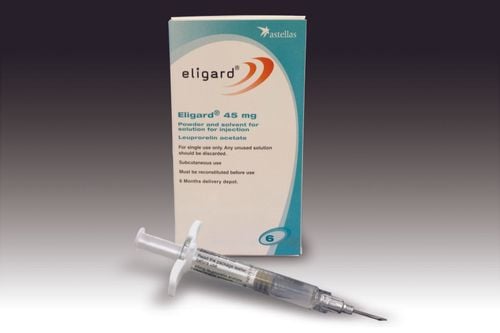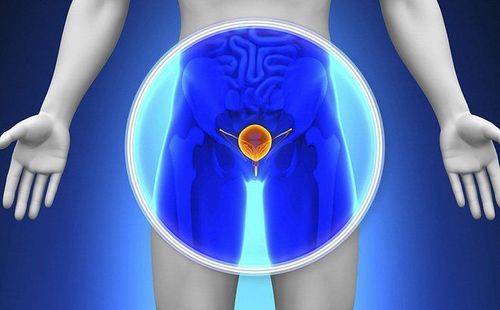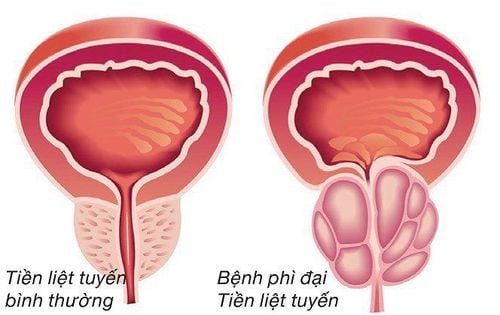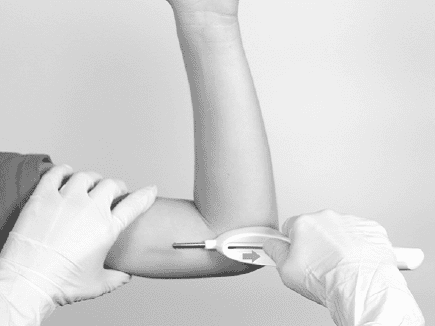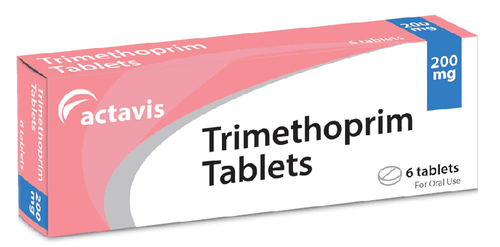This is an automatically translated article.
The article was professionally consulted by MSc Vo Thien Ngon - Urologist, Vinmec International Hospital Da Nang.Prostate hyperplasia, also known as benign prostatic tumor or benign prostatic hypertrophy, is a common prostate disease in middle-aged men and older. Although the disease is not too dangerous, it still needs to be detected and treated early. This article will provide everything you need to know about benign prostatic hyperplasia.
1. What is benign prostatic hyperplasia?
The prostate gland is a male sex gland, located around the neck of the bladder and part of the urethra (urine passage). Benign prostatic hyperplasia (formerly known as prostatic hyperplasia or prostatic hyperplasia) is a benign enlargement of the prostate gland. The disease is caused by the benign proliferation of one or several types of cells that make up the prostate gland, increasing the volume and weight of the gland, causing compression to narrow the urethra and deform the bladder neck. urinary disorders.Statistics of the World Health Organization show that more than 50% of men aged 60 - 70 years have prostate cancer, this rate is up to 88% in those 80 years old. The incidence and severity of the disease generally increase with age.
Benign prostatic hyperplasia can develop slowly over a long period of time without causing any danger. However, because the prostate gland surrounds the urethra, an enlarged prostate will obstruct the flow of urine from the bladder to the urethra, causing symptoms of urinary disorders.
Symptoms of prostatic hyperplasia affect the quality of life, especially nocturia, making patients unable to sleep well or urinating more often, urgently... In the bladder, as the disease progresses Over time, it can decrease bladder function, worsen lower urinary tract symptoms, or affect kidney function.
If severe, it can cause chronic urinary retention leading to cystitis, urinary tract infection, even kidney failure. Patients should seek medical attention when symptoms of urinary disorders or acute urinary retention appear.

2. Causes of benign prostatic hyperplasia
Benign prostatic hyperplasia is more common in elderly men. There is currently no detailed explanation for this phenomenon, but according to many researchers, changes in hormone balance and cell growth may be factors in the condition. In addition, genetic factors are also one of the causes of benign prostatic hyperplasia. This condition should be treated early to avoid the bad effects caused by the disease.
3. Symptoms of benign prostatic hyperplasia
Diarrhea (increased frequency): Ururia is a phenomenon in which the patient urinates continuously (the time between the two urinations is <2 hours), but each time passes a little urine (less than 150ml) under normal conditions. ; At first, the frequency of urination increases at night due to an increase in the parasympathetic nervous system, then increases in frequency during the day and at night.

Difficulty urinating: Dysuria is a phenomenon where it is difficult to push urine out of the bladder; In addition, there are manifestations: The urine is weak, small, sometimes not in the form of rays, but the urine is in small drops right under the toes. Urinary retention: Urinary retention can occur suddenly acutely (acute urinary retention), urinary retention can also appear gradually (chronic urinary retention) after a period of dysuria; Urine residual urine (residual urine remaining): The patient urinated for a long time but could not urinate completely, after urinating, there was no feeling of comfort, still feeling the need to urinate; Urine left in the bladder after urinating is called residual urine. When residual urine is greater than 50ml, it is considered significant; Residual urine in the bladder after urinating is determined by catheterization or ultrasound, by cystogram venography; The phenomenon of residual urine is often accompanied by dysuria, weak urine stream, and dropsy. Leaky urine (wetting the bed can't hold urine): Leaky urine is the phenomenon of urine flowing through the mouth of the flute out involuntarily. Diarrhea in cases of bladder overdistention, common in benign prostatic hyperplasia stage 3, neurogenic bladder disease. This is complete chronic urinary retention, when urinating, urine volume can reach hundreds of liters;

Painful urination (painful urination): Painful urination is an uncomfortable burning pain when urinating, clinical manifestations gradually increase from burning pain to a burning sensation like needles in the bladder, spreading to follow the urethra when urinating, even feeling painful urination like a knife cutting along the urethra, making the patient afraid to urinate; Irritable syndrome: Due to stagnation of urine, daytime urination, constant urge to urinate at night, can't help it, automatic urine drip, easy to lead to infection; Obstruction syndrome: Disruption to urinating such as difficulty urinating, small urine stream, slow urination, waiting to urinate, intermittent urination, straining to urinate, frequent urination; Hematuria: This is a distinctive sign of benign prostatic hyperplasia, especially when there is an infection. The degree is often multiple but easy to treat.

4. Diagnosis of benign prostatic hyperplasia
Benign prostatic hyperplasia progresses slowly and is very rarely fatal. The incidence of the disease increases gradually with age, men from 40 years old can appear the disease.
Currently, to diagnose benign prostatic hyperplasia, a specialist will prescribe basic tests to probe the urinary system, prostate gland (such as ultrasound, X-ray) and uroflowmetry. graph (exploration of urine flow rate to assess the degree of urinary obstruction).
Quantitative testing of serum PSA (prostatic specific antigen) will be performed to preliminarily determine whether urinary disorders are caused by benign prostatic hyperplasia or in the setting of an Prostate cancer that often presents in the same way.
5. How is benign prostatic hyperplasia treated?
Depending on the patient's medical condition, the doctor can prescribe the appropriate treatment. The patient may be assigned one of the following treatments:5.1. Medical treatment Benign prostatic hyperplasia may be indicated with drug therapy to relax the prostate smooth muscle and bladder neck to improve urine flow and reduce obstruction.
Drugs that work to block the production of male hormones related to prostate enlargement, are used to help prevent the growth of the prostate or shrink the prostate to help the process of going forward. urinating is easier.

5.2. Surgical treatment For severe disease, the doctor is forced to appoint the removal of benign prostatic hyperplasia to bring about long-term effectiveness. The surgery will help correct the hypertrophy to avoid compression of the urethra, while preserving the outer membrane and internal organization.
Surgery to remove the prostate is considered the best long-term solution for the patient. Surgery relieves the blockage and emptys the bladder.
There are 2 surgical methods:
Laparoscopic ablation: Endoscopic prostatectomy is a method of removing hyperplastic tumors by means of a transurethral endoscopic cutter; Open surgery: Specialist doctors often perform open surgery when prostatic hyperplasia is much benign, bladder is damaged, kidney failure. The location of the tumor and the patient's health status will determine whether to open surgery or not. For treatment, medical treatment is usually preferred, surgical treatment only when there are complications or when medical treatment fails.
Please dial HOTLINE for more information or register for an appointment HERE. Download MyVinmec app to make appointments faster and to manage your bookings easily.





